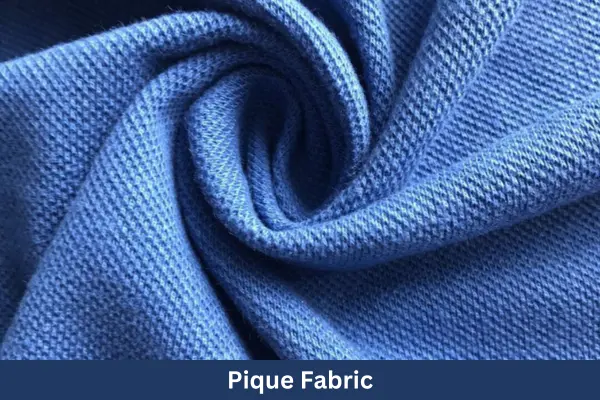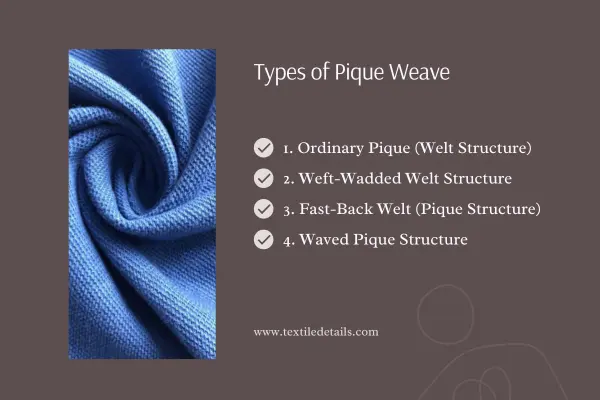Pique fabric follows a distinctive weaving pattern that creates its textured, quilted-like surface. This weave consists of:
- Plain face fabric: Made with one series of warp and one series of weft threads
- Stitching warp threads: Additional warp threads interwoven at the back to create depth
- Horizontal cord formations: These raised, sunken lines run continuously through the fabric
- Skip drafting system: Helps in achieving a structured yet breathable fabric

Each cord structure forms one repeat, contributing to the ribbed or waffle-like texture of pique fabric.
Technical Construction of Pique Fabric
Warp Thread Arrangement
- The warp order follows a ground-stitch-ground sequence.
- Typically arranged in a ratio of two ground threads per stitching thread.
- The stitching ends are interwoven at intervals to maintain structural integrity.
Weaving Stages
- First Stage: Plain weave is inserted on the ground ends.
- Second Stage: The stitching warp is lifted over multiple picks, depending on the final fabric design.
- Final Stage: The two weaving stages combine to create the finished pique weave.
Drafting and Lifting Plan
- Ground ends are controlled by front shafts (skip-draft method).
- Stitching ends are placed on two back shafts to reduce friction.
- Coarse fabrics use two healds, medium-weight fabrics use four healds, and fine fabrics use six healds.
Types of Pique Weave
There are four primary variations of pique fabric, each with distinct construction techniques:
1. Ordinary Pique (Welt Structure)
- Loose-back construction
- No wadding picks
- Lightweight with a subtle textured effect
2. Weft-Wadded Welt Structure
- Includes wadding picks to enhance depth and structure
- Creates a more substantial fabric for heavier applications
- Requires additional loom modifications for weaving

3. Fast-Back Welt (Pique Structure)
- Stitching ends are interwoven in a plain order
- Produces a firmer, more durable fabric
- Reduces the float length, preventing wear and tear
4. Waved Pique Structure
- Indentations do not align horizontally
- Raised cords are arranged in alternating groups
- Uses two wadding picks per repeat to form wavy effects
